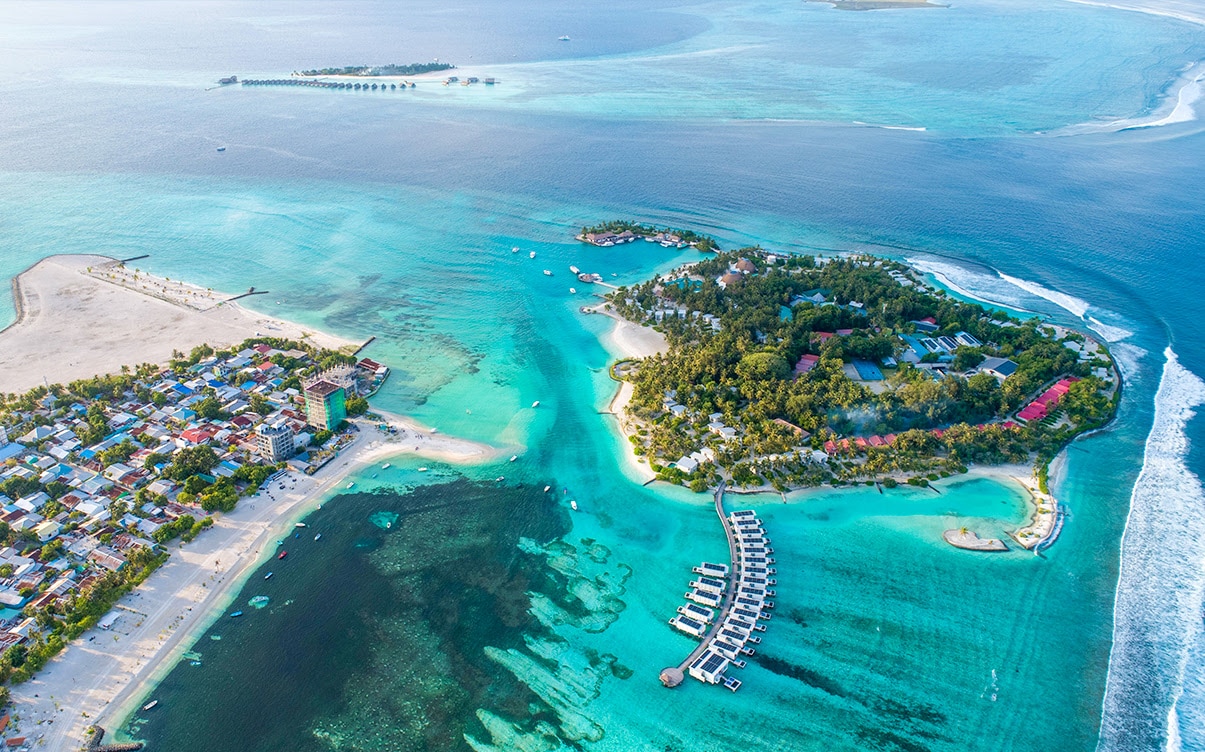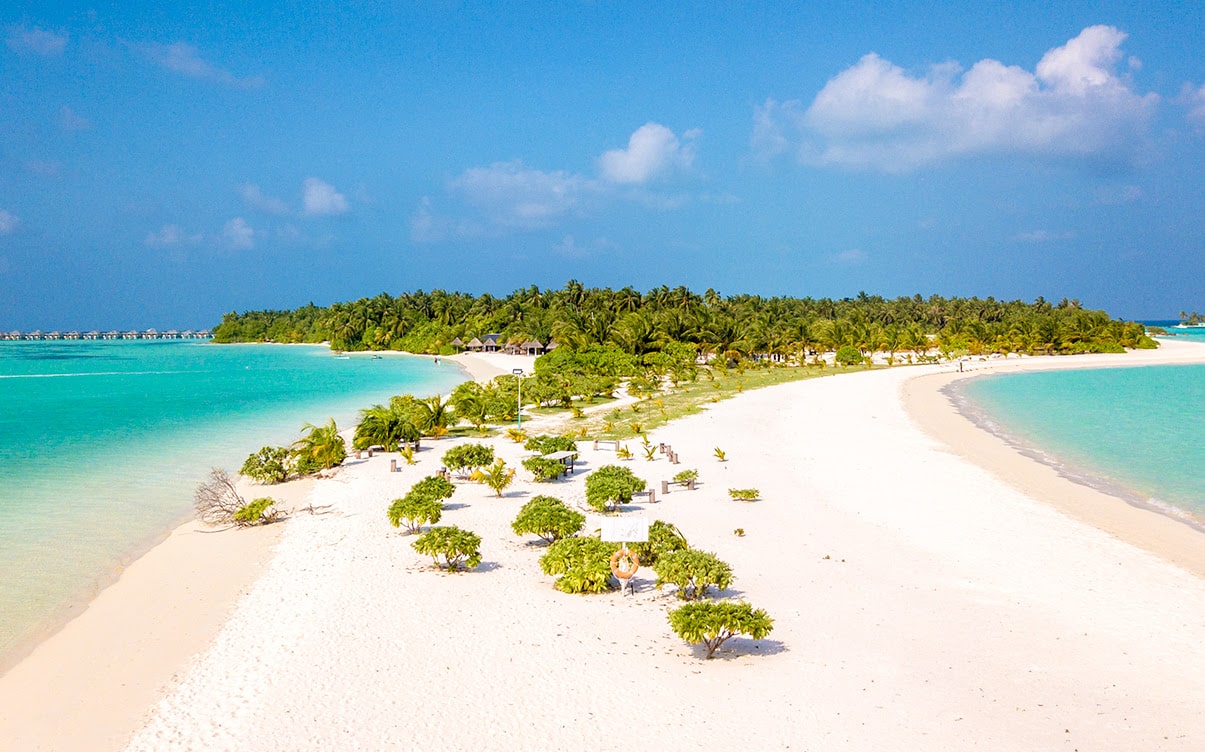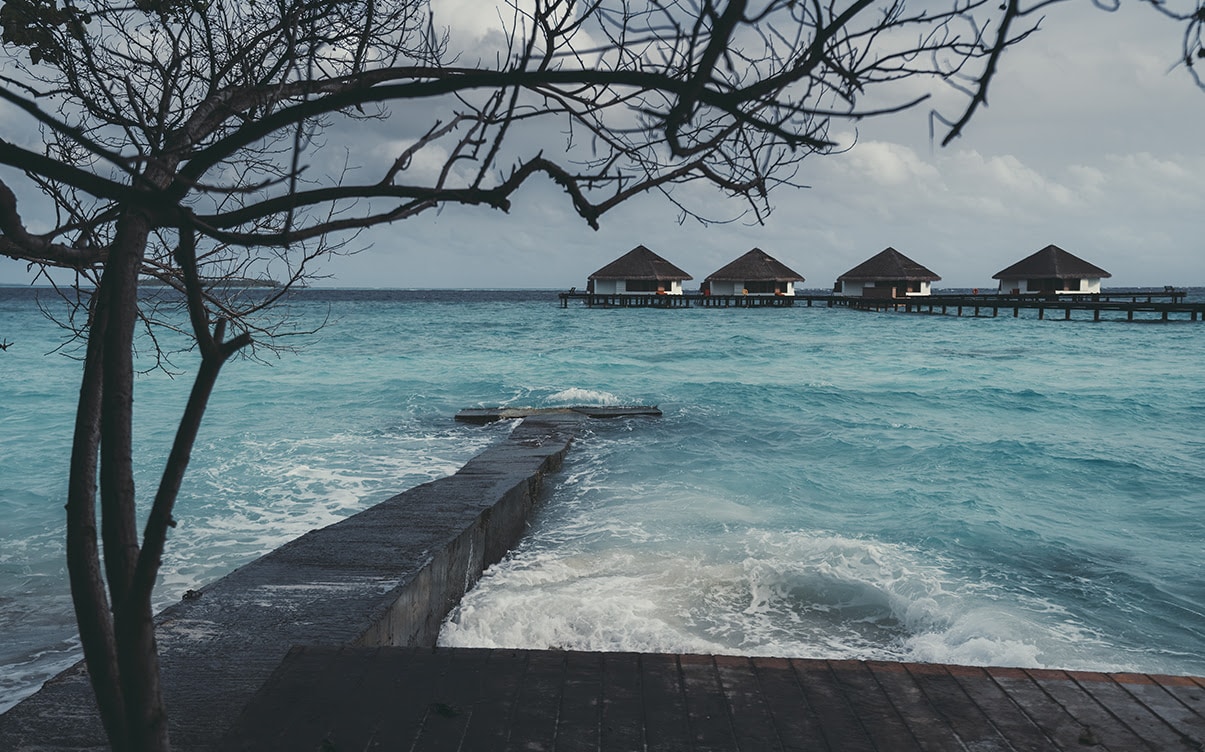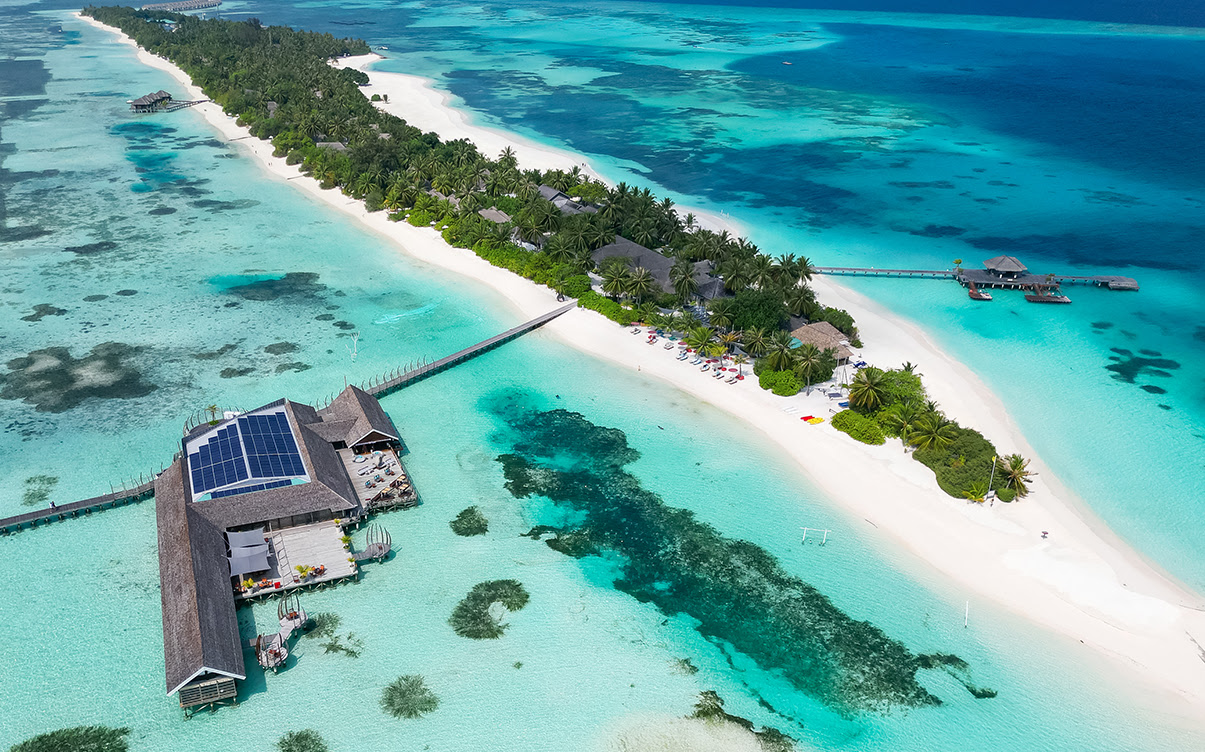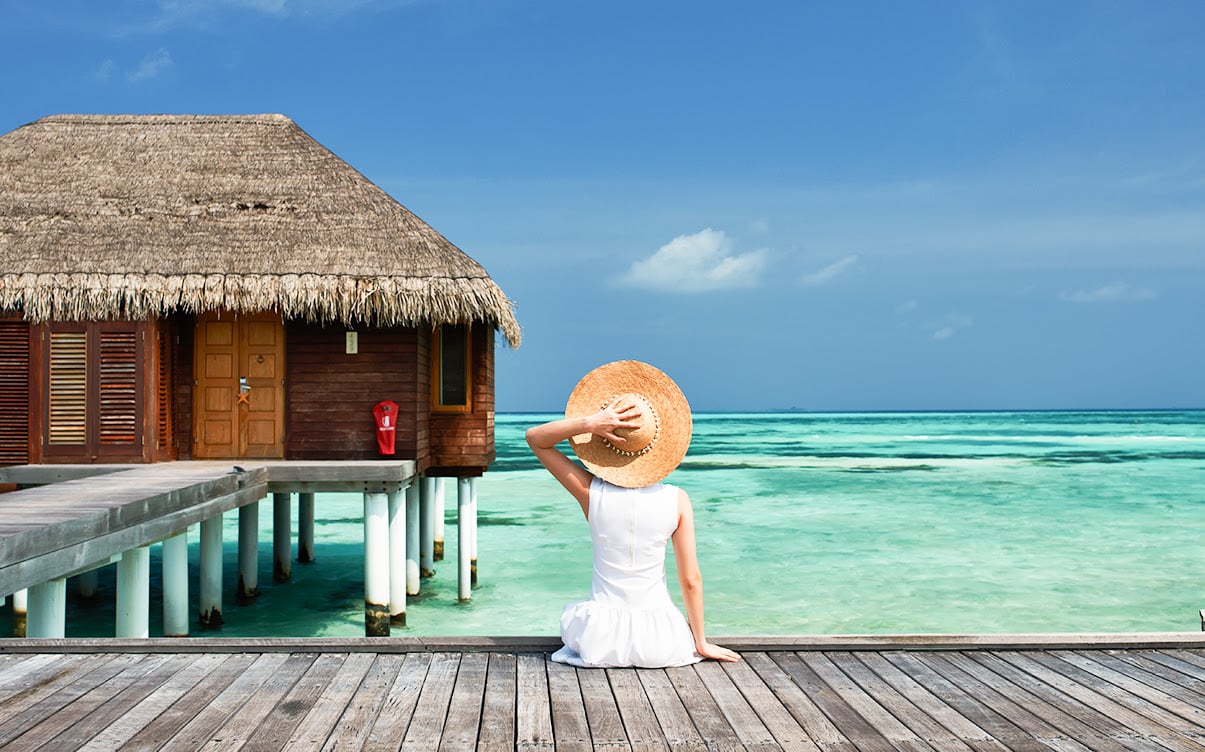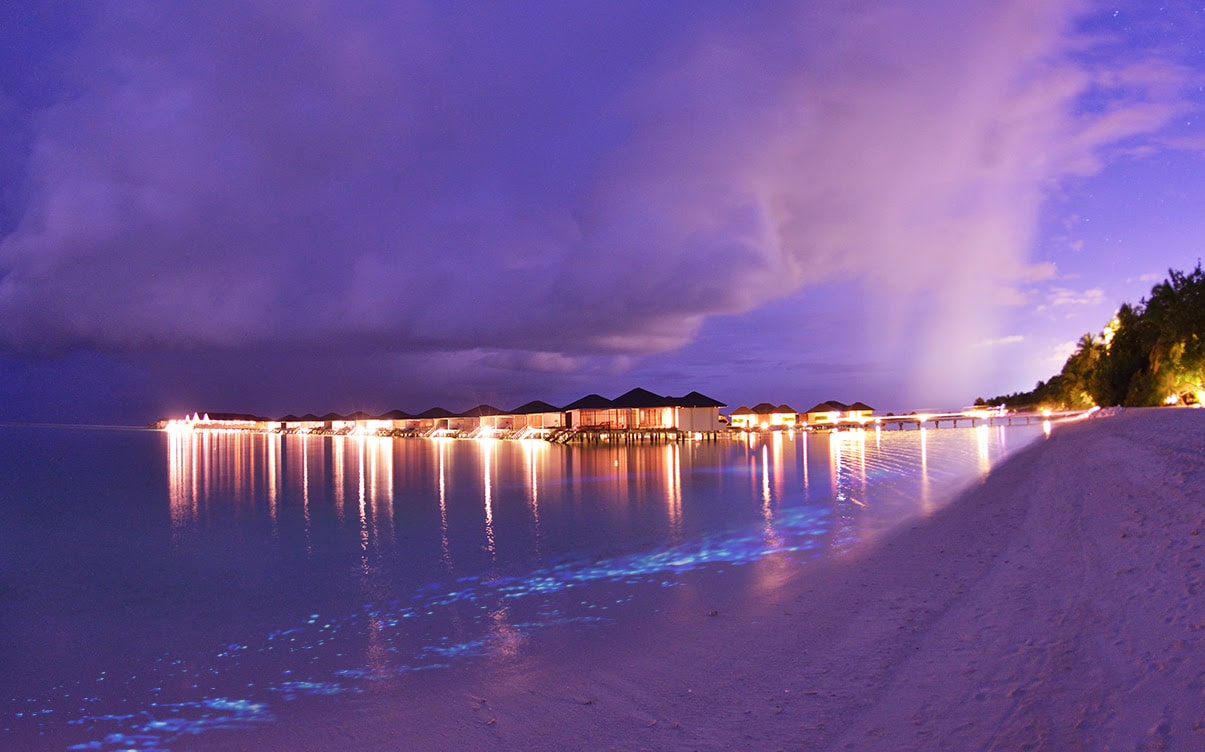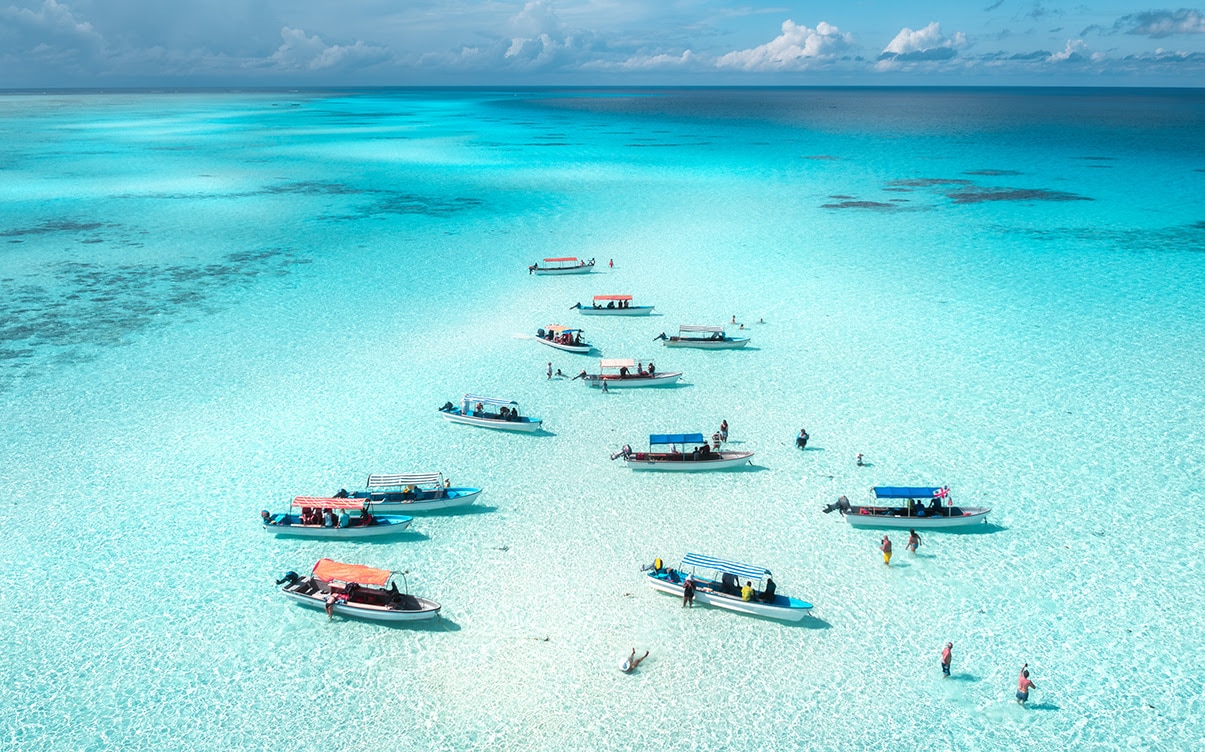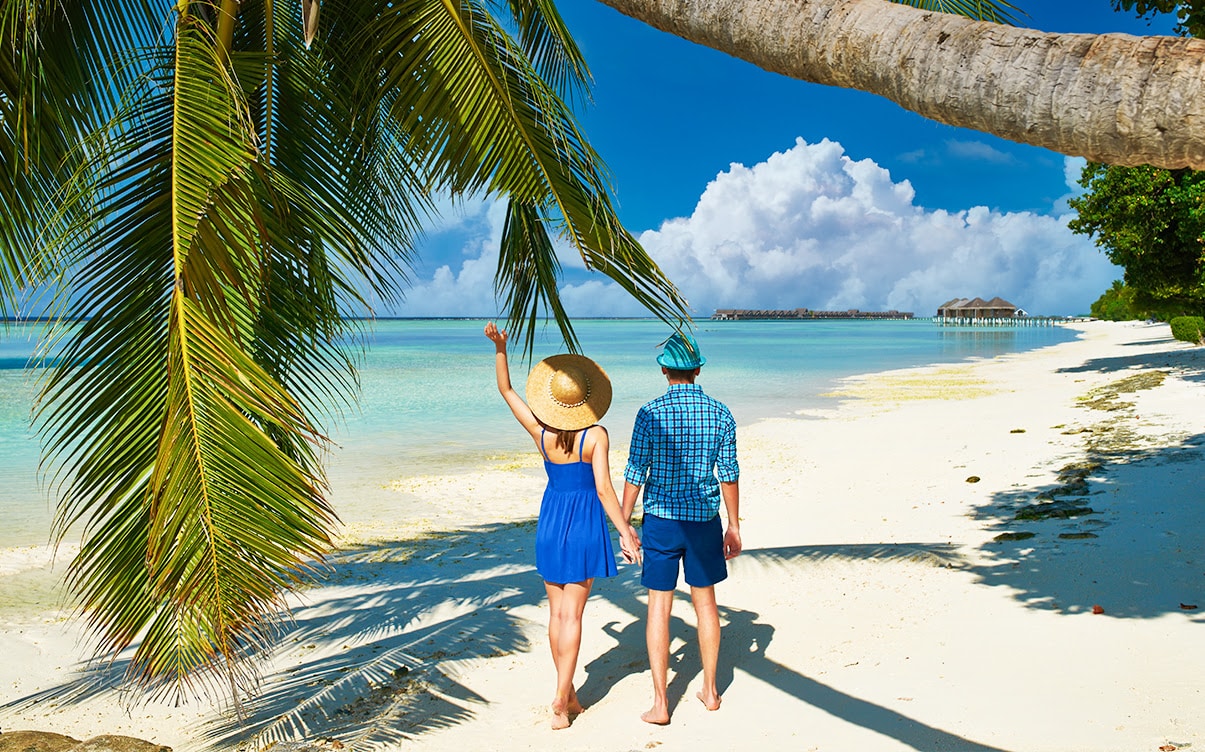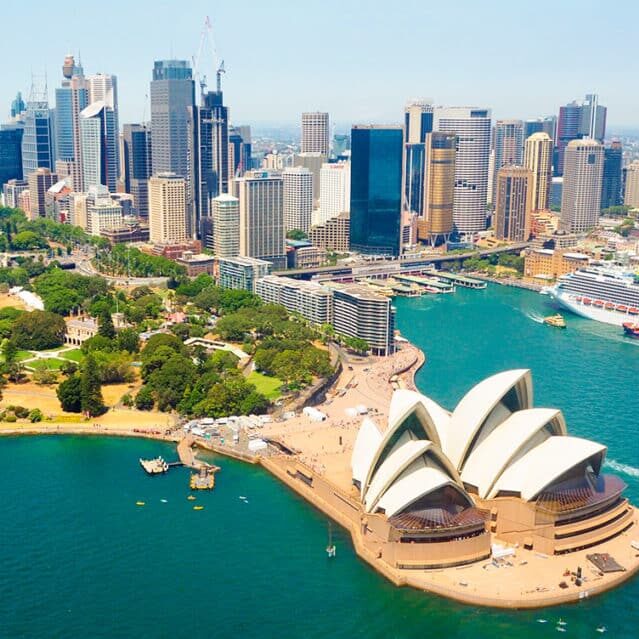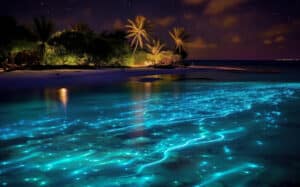Best Time to Visit the Maldives for Clear Skies and Calm Seas
Disclaimer: This post may contain affiliate links. Please see our Disclosure Policy and Advertiser Disclosure for details.
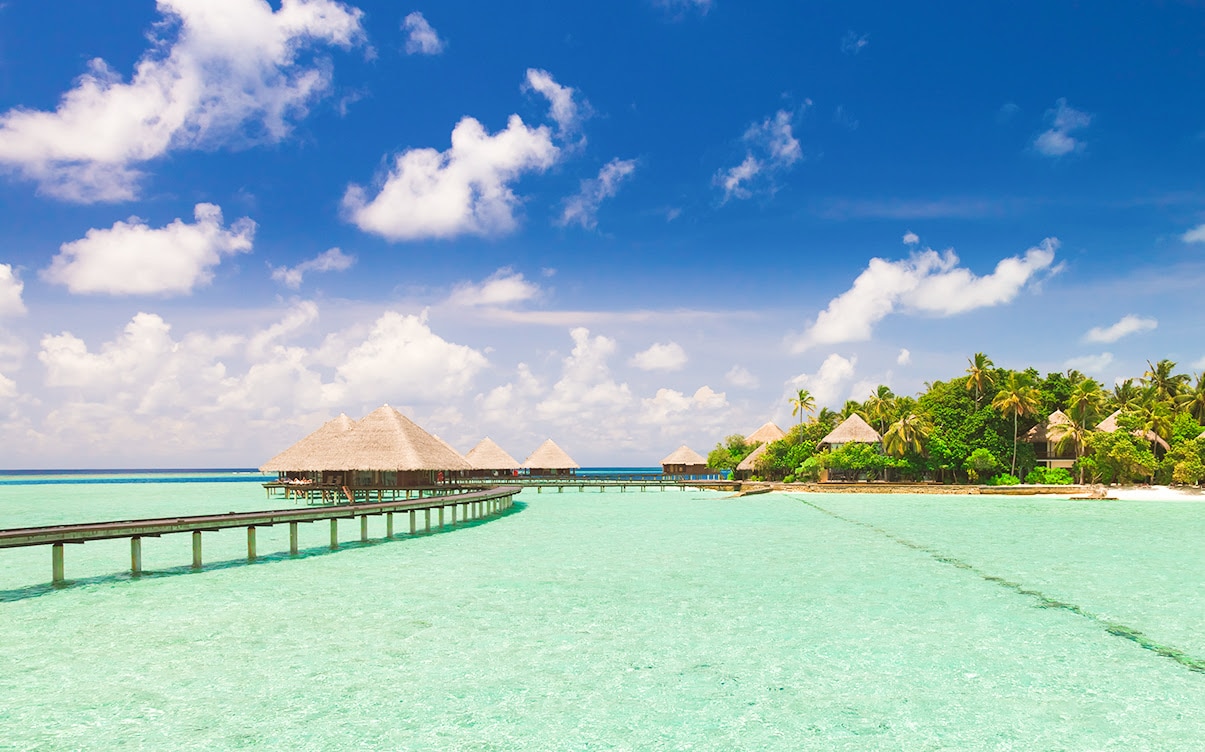
Visiting the Maldives is quite possibly one of our favorite destination trips in the entire world. Whether it’s a perfectly timed visit to see the stunning sea of stars or a few days spent in the overwater bungalows, it’s such an incredible place to be, and it’s no surprise we keep coming back.
The Maldives are a tropical getaway, but that doesn’t mean they’re necessarily a paradise all year round. Or are they? When is the best time of year to visit if you’re looking for clear skies, calm seas, and an experience like something out of a dream? Let’s talk about it!
First, the Basics
The Maldives – officially known as the Republic of Maldives – is a country in Southeast Asia and the Indian Ocean, southwest of Sri Lanka and India. The chain of islands stretches in a line north to south, with the northernmost islands at the same latitude as southern India, and the southernmost islands straddling the equator. You can’t get more equatorial than the Maldives!
While the country is made up of 1,192 individual islands across 26 atolls, most of them are quite small and clustered together. This is because the islands themselves are, in fact, essentially just large sandbars and coral clusters lining a marine ridge. It’s actually the lowest-elevation country out of any in the world.
Because of this composition, the Maldives are actually heavily threatened by climate change. Rising sea levels put these barely-above-sea-level islands at risk, and the current rate of sea level rise might make the Maldives uninhabitable in just 75 years. In other words, if you want to visit, don’t wait!
Average temperatures and humidity are actually pretty stable all year round. Average lows are 77F in the coldest months and 80 F in the warmest, while the highs are 86-88F all year. Relative humidity levels range from 77% in February to 82% in November; not much difference between them.
Those facts might make you think you can visit the Maldives any time of year and have a pleasant time, but there’s one significant factor that puts the kibosh on that idea: the rainfall.
Like most tropical countries, the Maldives effectively have two seasons: the dry season and the wet season. The transition months between these are often known as “shoulder” seasons, and mark the transition from one to the other.
To put things into perspective, the peak of the dry season might see rain three days in a month, while the peak of the wet season will see rain for at least two weeks of the month, if not more.
The Dry Season in the Maldives
The Maldives alternates between a dry season and a wet season, and while the humidity is largely the same across them both, the difference is the wind. During the dry season, the wind is calmer, which means the oceans are calmer. You won’t have choppy waters or cloudy skies; at most, you’ll have some high-floating, puffy white clouds to bring a bit of texture to the skies in the incredible photos you take.
The dry season isn’t parched by any means. You can still experience brief rain showers, and it’s always possible for a short-lived storm to kick up some serious waves, which can make any boat-based adventure a lot less pleasant. Fortunately, they blow over quickly and won’t get in the way of too many activities.
The dry season is the stretch of time between January and March. February is the “peak” of the dry season, the month with the least rain, the calmest weather, the clearest skies, and the least risk of your plans being disrupted by the weather. But, since this is the peak of the dry season, it’s also the “high” season and the peak of tourism, so it’s the time when your trip is going to be the most expensive.
One note is that this season is also commonly called the ” northeast monsoon” season. This is because, meteorologically speaking, the Maldives is in a Monsoon climate. The two seasons are largely defined by the direction of the wind, so when the wind is coming from the northeast, it brings with it clear skies, gentle waves, and clear water.
The Wet Season in the Maldives
The wet season in the Maldives, also known as the southwest monsoon season, the “low” season, or the rainy season, ranges from May to November. Unlike the dry season, it doesn’t have quite as much of a defined peak; May, June, July, August, September, October, November, and even December all average at least 12 days with rain each month. September and October are often thought of as the peak, but May is actually some of the rainiest in the whole country.
It’s important to remember, though, that the rainy season isn’t really that gloomy. Even on cloudy days, the clouds are often still high and fluffy, and the rain showers come fast, dump their water, and move on. This isn’t the all-day drizzle you might expect from some places you’ve visited before or even where you live; it’s more of a passing daily event. You can often take shelter for an hour or so and then head back out to have some fun when the skies clear up. In fact, the rain can even stir up some of the more exotic wildlife, and diving after a storm can be an incredible experience.
Obviously, since this is the low season, prices for a trip are going to be lower. But we’re really talking about comparative numbers here. If you’re looking at a difference of $100 on a $2,000 stay, that’s not a whole lot of savings to risk being rained out.
The End of Generalization
One thing we have to make clear here is that the Maldives are very spread out. The northernmost island is 750 km further north than the southernmost island! In terms of the USA, that’s about the north-south distance from Miami to Charleston, South Carolina. There can be a lot of differences in the weather across the length of this set of islands, and since storms are scattered and brief, there are times when you can be lying on the beach and enjoying the sun while an island just a few miles north or south of you is getting rain.
We just need to point this out to remind you that there are a lot of possibilities and a lot of differences depending on where in the Maldives you want to visit. The difference between the weather in Addu City, in Gan, in Male, or elsewhere can be significant and unpredictable.
The Best Time to Visit the Maldives for Great Weather
If you’re hoping to go during the peak season, when you’re as guaranteed as you can be of clear skies, calm water, and an idyllic adventure, then February is your best bet. February is the outlier month and the one that is most consistently dry compared to every other month. If you don’t want to go in February, any time from middle to late November through early April is going to be a good time to visit.
If we’re being honest, though, there’s no bad time to visit the Maldives. Storms are short-lived and you’re going to be getting plenty of hours of sunlight every day, it’s just that slightly more of those hours are interrupted by rain during the wet season.
Visiting the Seas of Stars
The Sea of Stars is the name for when clouds of bioluminescent plankton fill the water near the islands of the Maldives. These plankton react to stimulus – including the waves lapping on the beaches, you walking through the water, a boat sailing along, and more – by flaring up in an unearthly blue light.
The sea of stars is fickle; you can go during the peak season for it and spend hours every night strolling the beach, and still never see it. Other times, conditions might be terrible for it and yet there it is. It’s an unpredictable natural phenomenon, and that makes the beauty of seeing all the more worthwhile.
The tricky part is that seeing the sea of stars is actually almost the opposite of the “great weather” trips to the Maldives. The sea of stars is mostly a reaction to the rain, which means it’s most likely to occur during the peak of the rainy season, from May to November.
We have a whole guide on seeing the sea of stars, which you can read here. If that’s something you’re interested in doing, we highly recommend it. Don’t forget to take lots of pictures!
Festivals and Celebrations in the Maldives
The Maldives has a unique culture and heritage, with numerous different ethnic groups and religious organizations dominating the islands over the millennia. They had a long period of Buddhism, and are currently over 98% Islamic, which impacts their culture, festivals, and much more.
Some people who visit the Maldives do so solely to enjoy the beaches, the water, the underwater vistas, the wildlife, and the stars far away from the light pollution of civilization. You don’t have to engage with the local culture at all if you don’t want to, and many people choose to go that route.
On the other hand, there’s a lot to be said about experiencing the culture and festivities that occur in the places you visit. So, if you’re interested in attending any of the cultural festivals in the Maldives, when should you go?
Fisherman’s Day. Celebrated on December 10th, Fisherman’s Day is a celebration of recognition of the fishermen that drive a huge part of the Maldives economy. It may not be the most glamorous of celebrations, but it’s deeply important to the local culture.
Eid. In the Maldives, it’s known as Kuda Eid; in other places, it’s often called Eid ul Fitr. This celebration marks the end of Ramadan in Islamic culture and is celebrated for three days starting on the first day of the tenth month of the Islamic calendar. Since the date changes each year, you’ll want to look up when it is if you’re planning to visit.
National Day. This is the first day of the third month of the lunar calendar, and commemorates the ending of colonialism and the establishment of the Maldives government in 1573. It’s a more militaristic festival, with military parades and fireworks to celebrate.
Republic Day. The abolition of the monarchy is celebrated on November 11th and is often centered around feasting with traditional Maldivian dishes that combine their many cultural sources of heritage throughout their history.
Since the Maldives is so heavily Islamic, you shouldn’t expect much in the way of celebrations for more Western holidays like Easter, Christmas, and the like. They’re good times to visit because you’re more likely to have the vacation time already, but that’s about all they have going for them all the way out in the Maldives.
When Should You Visit the Maldives?
Bearing everything in mind, what is our recommendation? Truthfully, any time you like. The differences between the peak of the high season and the depths of the low season are so minimal you would be forgiven for thinking it was quite literally a paradise. Even the choppiest waters and the stormiest seas in the Maldives are nothing compared to the rough oceans back home, let alone winter. You’ll have plenty of time to bury your feet in the sand, take a dive beneath the waves, and lounge under the sun.
Essentially, it all comes down to one thing: when can you go? Many people book their holidays in December for, well, the holiday season. Easter is also a popular time to visit. Or, you can take time off and book a vacation to spend a week in your tropical paradise any time you want, and you’re going to have an amazing time.
We always recommend booking in advance, because your pricing and availability will be lower and lower the closer to the date of travel you get. To make things easier, since the Maldives is a fairly expensive trip to take, we also recommend using a travel credit card or other accounts to rack up points and alleviate some of the cost. It sure takes the sting out of those plane tickets, that’s for sure!
You may also enjoy:

